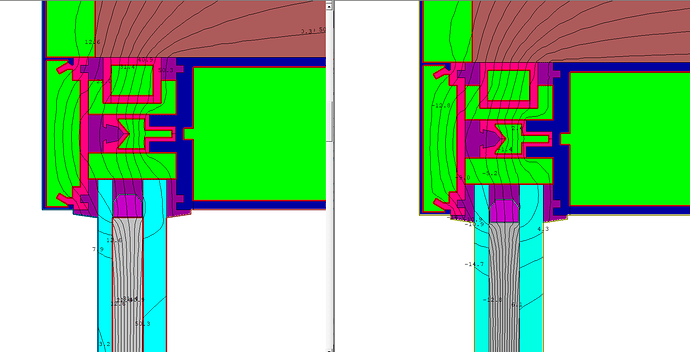Hi All,
I am trying to automate the THERM calculation of a window system using Honeybee.
I encountered a problem with the Import Window Glazing system component in Honeybee legacy. Please see below a screenshot. The surface temperature of HB generated glazing system (right) is much lower than the one imported from Window directly (left). Everything else is the same as generated by HB in these two THERM files.
I found the discrepancy is caused by the missing Glazing cavity surface boundary condition (the red lines around the air space in the directly imported glazing system) in HB generated glazing system, though the information of these BCs are in the glazing report used by this component. These two boundary condition overrides the surface temperature and emissivity, etc during the calculation. The omission of the glazing cavity BC caused inaccuracy in the dew point line and u-factors.
Does anyone have suggestions on how to solve this issue? Can we add this BC using HB? or is there a way to directly import the glazing system without using the txt report from Window?
